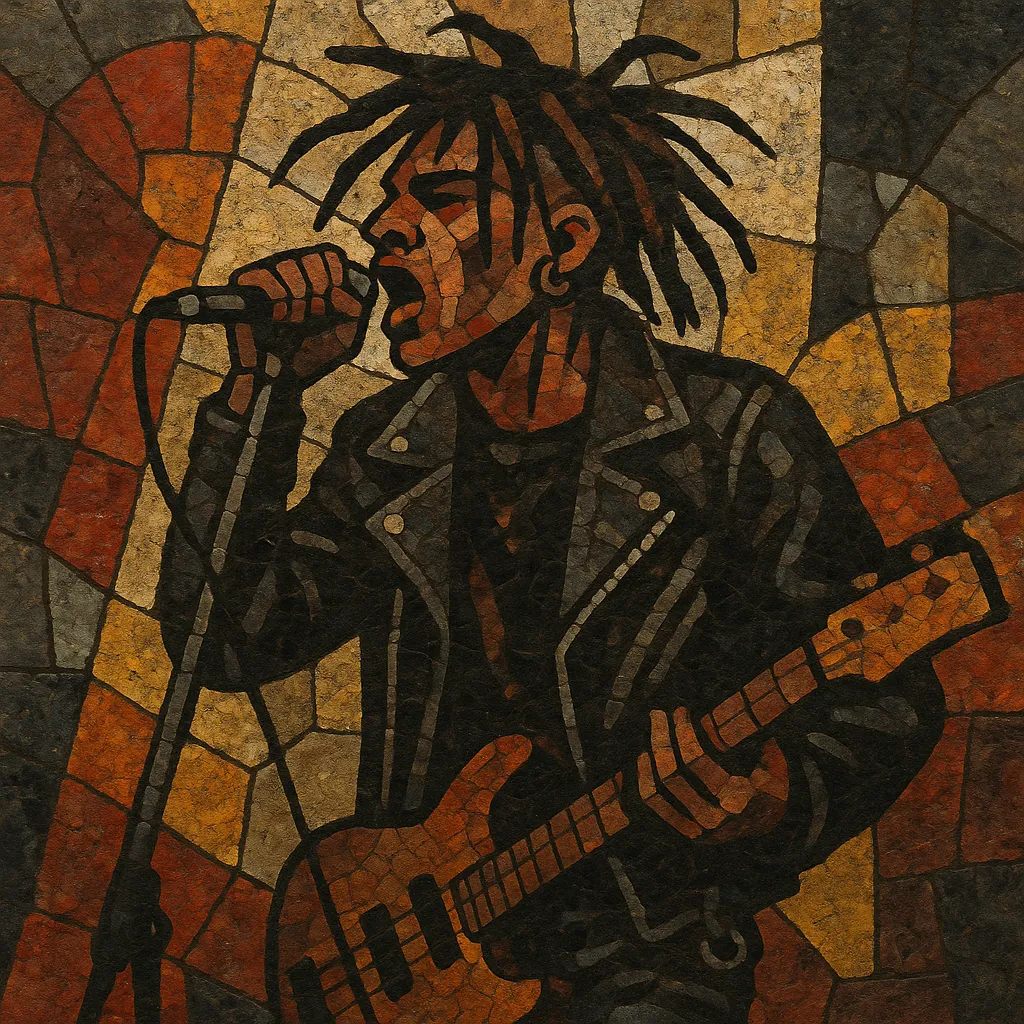Grebo is a late-1980s British indie/rock movement that fused punk energy and garage-rock riffing with hip hop sampling, danceable breakbeats, and a splash of industrial abrasiveness.
Emerging largely from England’s Midlands (notably the Stourbridge/Leicester axis), the scene prized a scruffy, irreverent, street-level aesthetic—Doc Martens, dreads, leather, biker-glam, and tongue-in-cheek swagger—while embracing DIY ethics and club-friendly rhythms. The sound often mixed distorted guitars and chant-along hooks with loops, scratches, and drum machines, anticipating the indie-dance crossover and laying groundwork for later big beat and rap-rock approaches.
Grebo coalesced in the UK during the second half of the 1980s, with bands around the Midlands (Stourbridge and Leicester) adopting a loud, cheeky, hybridized approach to rock. Drawing from punk’s brevity and attitude, garage rock’s fuzz, post-punk’s angularity, and industrial rock’s texture, these groups also incorporated hip hop’s sampling and breakbeats. The term “grebo,” once a slangy slight for scruffy rockers, was reappropriated to describe a distinct, proudly unkempt subculture and sound.
Grebo bands pushed guitars through heavy fuzz while looping breaks, adding turntable scratches or sampled stabs, and leaning into chanty, football-terrace choruses. The scene’s visual language—biker leathers, beat-up boots, and gleeful, gonzo humor—matched the music’s brash collision of club rhythm and rock heft. Independent labels, fanzines, and late-night radio helped the scene spread, even as many acts flirted with mainstream visibility.
As the UK’s broader indie sphere moved toward baggy/Madchester and rave culture, grebo’s club-minded instincts found sympathetic audiences. Bands scored charting singles and significant press, touring with both indie-rock peers and dance-oriented acts. Some artists evolved toward more electronic or polished directions, while others doubled down on ragged guitars and shout-along hooks.
Although the grebo tag faded by the early 1990s, its DNA persisted. The blend of rock riffs, breakbeats, and samples presaged big beat and informed later rap-rock and indie-dance fusions. Several bands became cult staples, and the scene’s irreverent, DIY, sample-happy approach remains a reference point for hybrid guitar music with dancefloor impulse.


